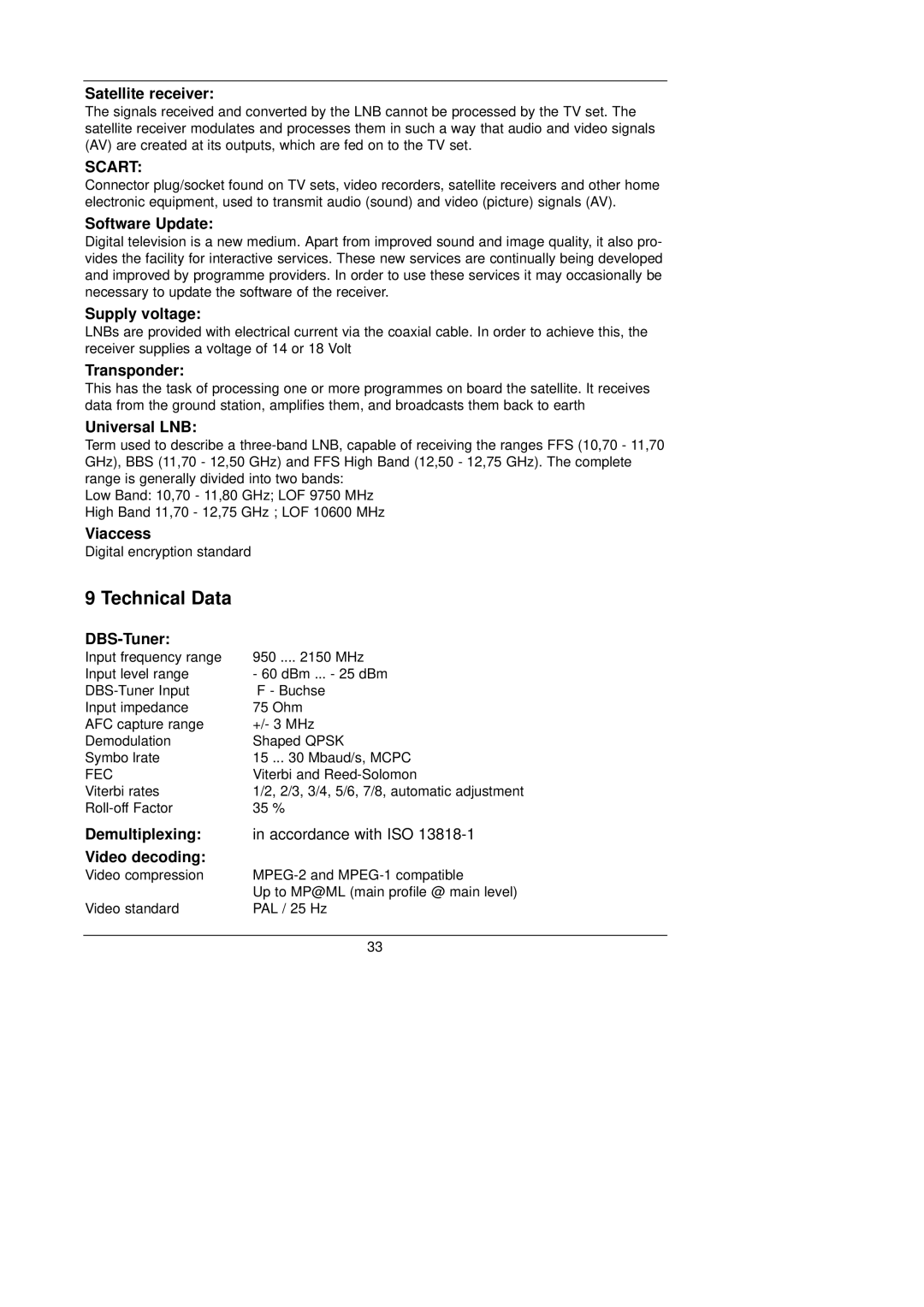
Satellite receiver:
The signals received and converted by the LNB cannot be processed by the TV set. The satellite receiver modulates and processes them in such a way that audio and video signals (AV) are created at its outputs, which are fed on to the TV set.
SCART:
Connector plug/socket found on TV sets, video recorders, satellite receivers and other home electronic equipment, used to transmit audio (sound) and video (picture) signals (AV).
Software Update:
Digital television is a new medium. Apart from improved sound and image quality, it also pro- vides the facility for interactive services. These new services are continually being developed and improved by programme providers. In order to use these services it may occasionally be necessary to update the software of the receiver.
Supply voltage:
LNBs are provided with electrical current via the coaxial cable. In order to achieve this, the receiver supplies a voltage of 14 or 18 Volt
Transponder:
This has the task of processing one or more programmes on board the satellite. It receives data from the ground station, amplifies them, and broadcasts them back to earth
Universal LNB:
Term used to describe a
Low Band: 10,70 - 11,80 GHz; LOF 9750 MHz
High Band 11,70 - 12,75 GHz ; LOF 10600 MHz
Viaccess
Digital encryption standard
9 Technical Data
DBS-Tuner:
Input frequency range | 950 .... 2150 MHz |
Input level range | - 60 dBm ... - 25 dBm |
F - Buchse | |
Input impedance | 75 Ohm |
AFC capture range | +/- 3 MHz |
Demodulation | Shaped QPSK |
Symbo lrate | 15 ... 30 Mbaud/s, MCPC |
FEC | Viterbi and |
Viterbi rates | 1/2, 2/3, 3/4, 5/6, 7/8, automatic adjustment |
35 % |
Demultiplexing: | in accordance with ISO |
Video decoding: |
|
Video compression | |
| Up to MP@ML (main profile @ main level) |
Video standard | PAL / 25 Hz |
33
